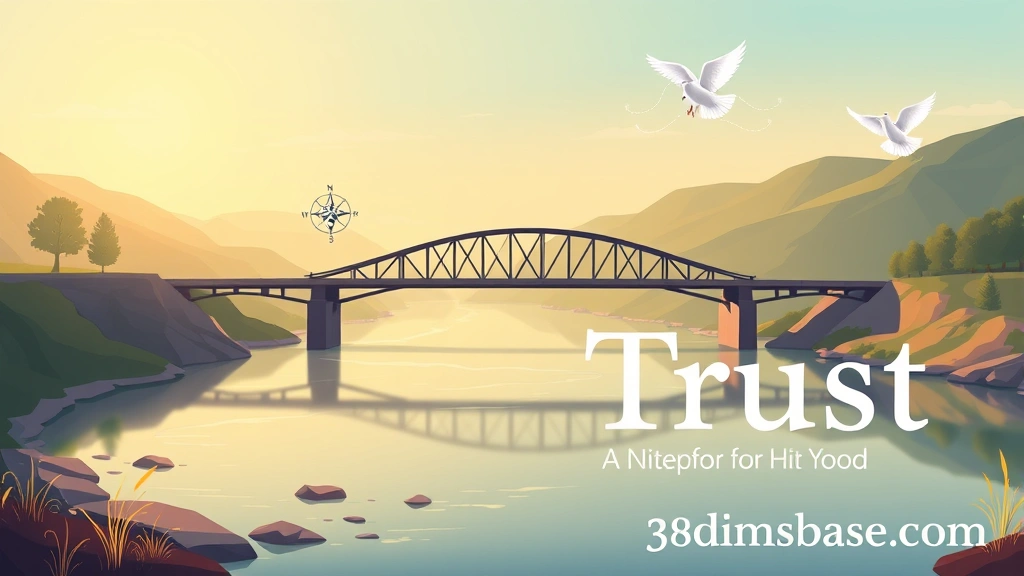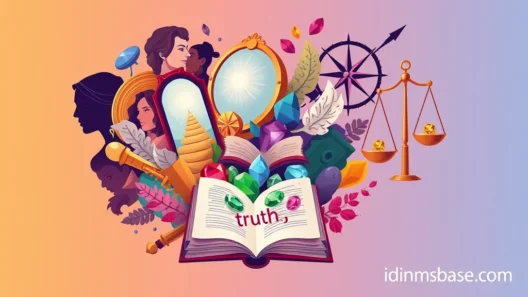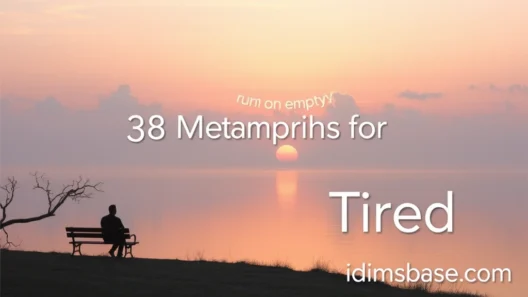Hey there, amazing reader! Have you ever thought about how trust is like the invisible string that connects us all? It’s truly fascinating how something so fundamental can be so complex, right? Trust is the bedrock of every relationship, whether personal or professional. It’s what allows us to sleep soundly at night, knowing that certain things are dependable.
But how do we really talk about trust? It's not a tangible object you can hold in your hand. That's where metaphors come in! They help us paint a vivid picture of this essential concept, making it easier to understand, build, and even mend. Get ready to explore 38 brilliant metaphors that will change the way you think about trust. Let’s dive in!
The Foundation of Connection: Metaphors for Building Trust
Trust isn't just given; it's built, brick by brick, moment by moment. These metaphors highlight the effort and care involved in establishing a strong foundation.
- Trust is a Bridge: It connects two points, allowing safe passage. Without it, there's a chasm.
- Trust is a Cornerstone: The essential, supporting element upon which everything else rests.
- Trust is a Tapestry: Woven thread by thread, with each positive interaction adding to its strength and beauty.
- Trust is a Seed: Planted with care, nurtured with consistency, and growing into something resilient.
- Trust is a Building Block: Each act of reliability adds another piece to a sturdy structure.
- Trust is a Scaffold: Providing support and safety as something new is being constructed.
- Trust is a Lighthouse: Guiding you through stormy seas, a steady beacon in the dark.
- Trust is a Compass: Pointing you in the right direction, even when you feel lost.
- Trust is an Anchor: Keeping you steady and secure, preventing you from drifting away.
- Trust is a Net: Catching you when you fall, providing a sense of security and safety.
- Trust is a Vault: Protecting your most precious vulnerabilities and secrets.
- Trust is a Promise Kept: Simple, powerful, and the very essence of reliability.
The Fragility and Strength: Metaphors for Trust’s Nature
Trust is a paradox: incredibly strong when present, yet surprisingly fragile when broken. These metaphors capture its delicate balance.
- Trust is Glass: Transparent, beautiful, but easily shattered once dropped.
- Trust is a Mirror: Reflecting truth and clarity, but a crack can distort everything.
- Trust is a Delicate Flower: Requiring constant care and attention to bloom, wilting without it.
- Trust is a Porcelain Doll: Beautiful and cherished, but incredibly fragile and hard to repair perfectly once broken.
- Trust is a Fine Wine: Taking time to mature and deepen, becoming richer with age, but can turn sour if mishandled.
- Trust is a Spiderweb: Intricately built, strong enough to catch, but easily torn and difficult to mend seamlessly.
- Trust is a Whisper: Easily lost in noise, but when heard, it carries immense weight.
- Trust is a Tightrope: Requiring immense balance and faith to cross, one misstep can be disastrous.
- Trust is a Crystal: Pure and clear, but can be clouded by doubt or shattered by betrayal.
- Trust is a Chain: Only as strong as its weakest link; one broken link compromises the whole.
The Action and Experience: Metaphors for Trust in Motion
Trust isn't just a static concept; it's something we experience, act upon, and feel. These metaphors describe trust in a dynamic way.

- Trust is a Leap of Faith: Taking a risk, believing in an unknown outcome or person.
- Trust is a Dance: Requiring rhythm, harmony, and responsive movement from both partners.
- Trust is a Handshake: A mutual agreement, a firm bond signifying reliability.
- Trust is a Safe Landing: Knowing you'll be caught, even when you can't see the ground.
- Trust is a Warm Blanket: Providing comfort, security, and a sense of being protected.
- Trust is a Steady Hand: Guiding you, offering support without wavering.
- Trust is a Clear Sky: No hidden clouds, no impending storms, just pure visibility.
- Trust is a Shared Secret: A bond formed through vulnerability and mutual respect.
The Consequences of Trust (or its Absence)
What happens when trust is present, or when it's gone? These metaphors explore the impact.
- Trust is the Air We Breathe: Essential for life, unnoticed until it's scarce.
- Trust is the Glue: Holding relationships and communities together.
- Trust is the Oil in the Machine: Allowing things to run smoothly, preventing friction and breakdown.
- Trust is a Currency: Exchanged, earned, spent, and can be devalued.
- Trust is a Shield: Protecting you from harm and deceit.
- Trust is a Garden: Needing constant cultivation; neglect leads to weeds and decay.
- Trust is a North Star: A constant, reliable guide you can always look to.
- Trust is a River: Flowing naturally when healthy, but can be dammed or diverted.
- Trust is a Beacon: Drawing people in, fostering connection and safety.
- Trust is the Silent Promise: Unspoken but deeply felt, the bedrock of all genuine interaction.
Key Takeaways

- Trust is Multifaceted: It's a foundation, a delicate object, an action, and a consequence all at once.
- Metaphors Clarify: Using vivid imagery helps us grasp the complex nature of trust.
- Building Trust Takes Effort: Like a bridge or a tapestry, it requires consistent care and honest actions.
- Trust is Fragile: Once broken, like glass or a mirror, it's incredibly difficult to fully restore.
- Trust is Essential: It's the "air we breathe" in relationships, making everything else function smoothly.
Frequently Asked Questions
Q1: Why are metaphors important for understanding trust?
Metaphors are incredibly powerful because they allow us to understand abstract concepts like trust by comparing them to something concrete and familiar. They help us visualize, connect with, and remember complex ideas, making trust feel more tangible and relatable.
Q2: Can trust be rebuilt once it's broken?

Yes, trust can often be rebuilt, but it's incredibly challenging and takes time, consistent effort, and genuine remorse (if applicable). Think of it like a shattered piece of glass: you can glue it back together, but the cracks will always be visible. The relationship might never be exactly the same, but it can become strong again in a new way.
Q3: What is the most common metaphor for trust?
While many metaphors are used, "Trust is a bridge" and "Trust is like glass" are among the most common. The bridge highlights its role in connecting, while the glass emphasizes its fragility and transparency.
Q4: How can I use these metaphors in real life?
You can use these metaphors to explain your feelings about trust to others, to better understand your own experiences, or even to guide your actions. For example, if you think of "trust as a seed," you'll remember that it needs consistent nurturing to grow. If you see "trust as a vault," you'll understand the importance of safeguarding shared vulnerabilities.
Q5: Is trust always a good thing?
While generally positive, trust can be misplaced or exploited. Blind trust can lead to vulnerability and harm. Healthy trust involves discernment and is built on consistent, reliable behavior. So, it's not just about trusting, but trusting wisely!
Wow, what a journey through the world of trust! It's clear that trust is far more than just a word; it's a dynamic force that shapes our lives, our relationships, and our world. Each of these metaphors offers a unique lens through which to view this vital concept. Which one resonated most with you? Do you have a favorite metaphor for trust that wasn't on our list? Share your thoughts and let's keep this conversation going! Your insights are truly valuable.






